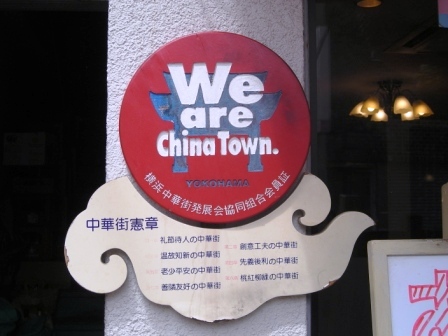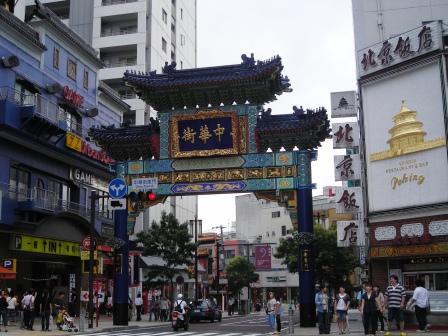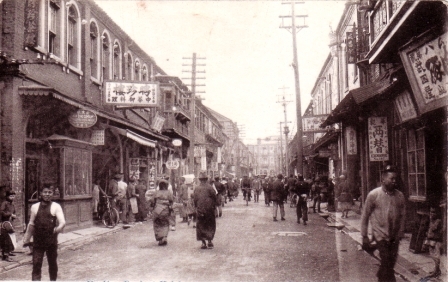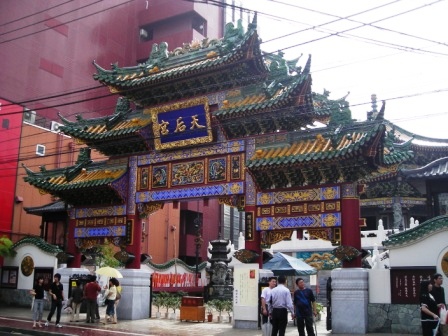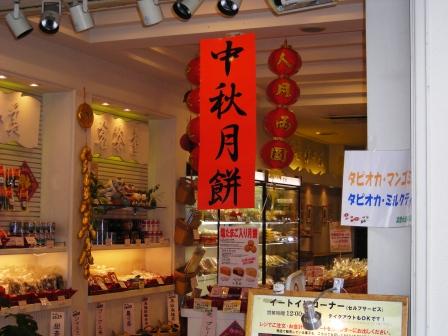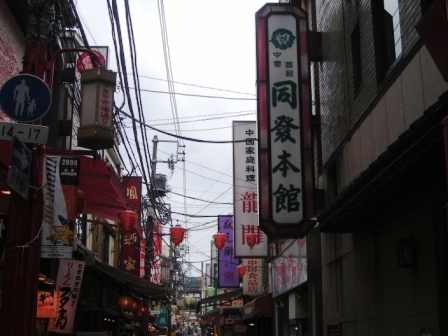 Yokohama Chinatown Yokohama Chinatown
横滨中华街
 Yokohama Chinatown was founded in 1859 when Japan was opened to foreign trade. When the Chinese migrants arrived they established the traditional social institutions such as temples, clan associations and later schools. Within three years of their arrival, the Yokohama Kanteibyo (Guan Di Miao), 横滨关帝庙dedicated to Guan Gong was established and quickly became a major center for Chinese migrants. This temple still count as one of the most important landmark in Yokohama Chinatown today. Yokohama Chinatown was founded in 1859 when Japan was opened to foreign trade. When the Chinese migrants arrived they established the traditional social institutions such as temples, clan associations and later schools. Within three years of their arrival, the Yokohama Kanteibyo (Guan Di Miao), 横滨关帝庙dedicated to Guan Gong was established and quickly became a major center for Chinese migrants. This temple still count as one of the most important landmark in Yokohama Chinatown today.
The development of Yokohama Chinatown was affected by the 1923 Great Kanto Earthquake and the second Sino Japanese War in 1937 when many Chinese migrants returned to China.
After World War Two, conditions for the Chinese living in Yokohama Chinatown improved and are reflected in 1955 when a goodwill archway, or Paifang, was constructed and the area officially recognized as Chinatown.
Today, the Yokohama Chinatown is the largest Chinatown in Japan and in Asia. It is also one of the largest Chinatowns in the world with some sources claiming it to be the second largest. The surrounding streets and train stations have prominent signs to lead visitors towards the Chinatown. Inside the Chinatown, some of the streets are named after places in China such as the Shanghai Street, 上海路, Chang An street (modern day xian) 长安道, Fujian Street 福建路and Suzhou Street苏州小路.
It has 10 paifang 牌坊 or archways at major points and even one for the pathway to the Guan Gong Temple. The main archway or the Eastern archway 中华街东门is the most impressive of all and can be ranked as one of the most impressive Chinatown archways in the world.
Along the streets of Chinatown, you can find a wide range of Chinese restaurants, shops offering Chinese pastries, dim sum, dumplings and bao (Chinese buns). These are located alongside shops offering Chinese souvenirs. There are also shops offering food ingredients and foodstuffs required for preparation of Chinese dishes.
Yokohama Chinatown is one of the most visited tourist sites in Japan and even have a special visitor center call “Chinatown 80”offering information, maps and brochures. Although tourism plays a large role in the economy of Yokohama Chinatown, it is a living Chinatown and takes into consideration the economic and cultural needs of local stake holders. This is best illustrated in the founding of Mazu temple instead of a residential complex following feedback from the local stakeholders.
Major Chinese festivals such as the Chinese New Year, Qing Ming and Mid Autumn continue to be celebrated. The birthdays and commemorative dates of Mazu and Guan Gong are also major events in Chinatown. These are held in the Mazu temple and the Guan Gong temples, the two major social institutions in Yokohama Chinatown. The celebrations often include lion dance or dragon dance attracting large crowds transforming a religious event into a social one as well.
Yokohama Chinatown is distinctive because of its size and reputation as one of the largest Chinatowns in the world. At the same time, it shows how in the management of Chinatown, traditional institutions and cultural practices can be promoted, given prominence and be beneficial to both local stakeholders and the tourism industry.
Related articles:
|

 Yokohama Chinatown
Yokohama Chinatown 
